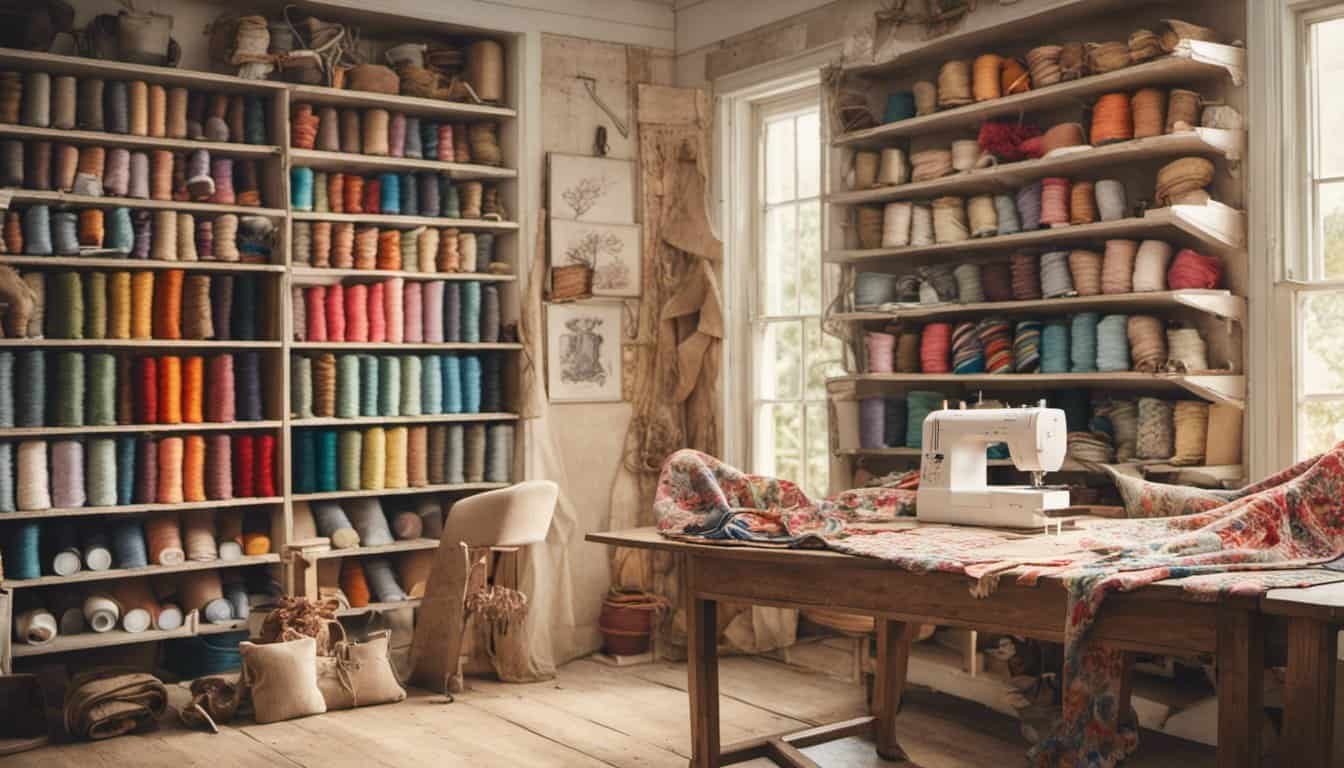Are you passionate about sewing but worried about fabric going to waste? You’re not alone. Minimizing fabric waste not only saves you money but also supports a more sustainable approach to your crafting.
With a few smart cutting techniques, you can make the most out of every yard. Whether you’re a seasoned tailor or just starting out, these tips will help you cut efficiently and reduce your environmental footprint.
Ready to transform your sewing process and embrace eco-friendly practices? Let’s dive into how you can minimize fabric waste when cutting.
Plan Your Cutting Strategy
Effective cutting starts with a well-thought-out strategy. Begin by measuring your fabric accurately to ensure each pattern piece fits perfectly. Analyze your pattern layout to identify the most efficient placement of pieces, reducing excess fabric. Nest pattern pieces tightly together, allowing you to use every inch of material. Arrange patterns by grain direction, which minimizes waste caused by misaligned pieces. Utilize fabric scraps by incorporating them into smaller projects or as accents in your design. Implementing these strategies helps maximize fabric use and minimize waste.
Tips for Optimizing Your Cutting Strategy
- Measure Precisely: Use a fabric ruler and tape measure to ensure accurate measurements.
- Plan Layout: Sketch your pattern arrangement on graph paper before cutting.
- Nest Efficiently: Place larger pieces first, then fit smaller pieces into gaps.
- Follow Grain Lines: Align patterns with the fabric’s grain to prevent distortion.
- Repurpose Scraps: Save leftover fabric for future projects or decorative elements.
Example Layout Planning
| Pattern Piece | Quantity | Placement Tips |
|---|---|---|
| Front Panels | 2 | Place side by side along the grain |
| Back Panels | 1 | Position next to front panels |
| Sleeves | 2 | Fit into corners of the remaining space |
| Pocket Pieces | 4 | Utilize small leftover sections |
| Trim and Accents | Various | Incorporate into seams and edges |
By meticulously planning your cutting strategy, you ensure efficient fabric usage and significantly reduce waste in your sewing projects.
Select Appropriate Fabric
Choosing the right fabric sets the foundation for minimizing waste. Your selection impacts how efficiently you can cut and utilize the material.
Consider Fabric Width and Grain
Evaluate fabric widths to optimize pattern placement. Matching pattern pieces to the fabric’s grain ensures consistency and reduces excess. Aligning designs with the grain minimizes fabric distortion, allowing tighter nesting of pieces.
Choose Multifunctional Fabrics
Opt for fabrics that serve multiple projects. Versatile materials like cotton or linen accommodate various patterns and uses. Selecting multifunctional fabrics maximizes your inventory, enabling you to repurpose leftovers for different sewing endeavors.
Utilize Effective Cutting Tools
Effective tools enhance fabric utilization and reduce waste. Choose the right tools to streamline your cutting process.
Invest in Quality Scissors
Quality scissors ensure clean, precise cuts, minimizing fabric fraying and errors. Select fabric-specific scissors like dressmaker shears for long seams or pinking shears to prevent edge fraying. Maintain scissors by regularly sharpening blades and storing them properly to extend their lifespan and preserve cutting accuracy.
Use Rotary Cutters
Rotary cutters provide smooth, straight cuts, especially for layered fabrics. Choose a rotary cutter with a comfortable grip and replaceable blades to maintain sharpness. Pair it with a self-healing cutting mat to protect surfaces and extend blade life. Using rotary cutters accelerates the cutting process and reduces fabric waste through accurate slicing.
Optimize Pattern Layout
Optimizing your pattern layout ensures you use fabric efficiently and reduce waste. Apply these techniques to enhance your cutting strategy.
Nest Patterns Efficiently
- Arrange Tightly: Place pattern pieces as close together as possible to minimize unused space.
- Rotate Pieces: Turn patterns strategically to fit around curves and irregular shapes.
- Utilize Scraps: Incorporate smaller pieces into leftover fabric sections for additional project components.
Align Patterns for Minimal Waste
- Match Grain Lines: Position pattern pieces parallel to the fabric’s grain to ensure consistency and optimal usage.
- Consider Pattern Direction: Align directional prints or stripes to reduce fabric waste and maintain design integrity.
- Plan Layout Around Features: Arrange pieces around fabric features like selvages or unique patterns to maximize material utilization.
Manage and Recycle Fabric Scraps
Effectively managing fabric scraps reduces waste and supports sustainable sewing practices. Implement these strategies to make the most of your leftover materials.
Reuse Leftover Fabric Pieces
Reuse fabric scraps by integrating them into your projects:

- Patchwork Projects: Create quilts, blankets, or pillow covers using assorted fabric pieces.
- Accessories: Sew items like headbands, face masks, or tote bags with leftover fabrics.
- Embroidery Accents: Add decorative stitching or applique to existing garments.
- Appliqué Designs: Incorporate smaller fabric shapes into larger projects for added detail.
- Toy Making: Craft soft toys or stuffed animals using surplus fabric.
Donate or Repurpose Excess Fabric
Donate excess fabric to benefit others and the environment:
- Local Charities: Provide fabric to organizations that create clothing or blankets for those in need.
- Craft Groups: Share materials with community sewing circles or craft workshops.
- Schools: Supply fabric to art programs for educational projects.
- Animal Shelters: Donate fabric for making pet beds or blankets.
- Recycling Centers: Turn in unusable scraps to textile recycling facilities for proper processing.
By reusing and donating fabric scraps, you contribute to a sustainable sewing practice and give your leftover materials new life.
Implement Fabric Management Techniques
Effective fabric management enhances your cutting efficiency and minimizes waste. Implement these techniques to optimize fabric usage:
Organize Your Fabric Storage
Keep fabrics neatly stored to prevent damage and ensure easy access. Use racks, shelves, or drawers categorized by fabric type, pattern, or color. Maintain a clean workspace to streamline your cutting process.
Label and Categorize Fabrics
Label each fabric roll or bundle with relevant information such as fabric type, width, and project suitability. Categorize fabrics based on usage frequency and compatibility with your projects. This organization aids in quick selection and reduces unnecessary handling.
Roll Fabrics Properly
« How to Sew Leather by Hand: 7 Essential Tips for Beginners
10 Best Portable Sewing Machines for Travel That Will Change Your Trips Forever »
Roll fabrics instead of folding to prevent wrinkles and creases. Rolling maintains fabric integrity and allows for smoother cutting. Ensure rolls are tight and uniform in size to maximize storage space and accessibility.
Maintain an Inventory System
Create an inventory list detailing all available fabrics, including their quantities and locations. Update the inventory regularly to track fabric usage and avoid over-purchasing. An accurate inventory helps in planning projects and utilizing existing materials efficiently.
Pre-Wash Fabrics
Pre-wash fabrics to account for shrinkage and color changes. This step prevents unexpected alterations during your project, reducing the likelihood of fabric waste. Follow the manufacturer’s instructions for washing to maintain fabric quality.
Plan Projects Ahead
Plan your sewing projects in advance to determine the exact amount of fabric needed. Accurate planning minimizes excess cutting and ensures you use only the necessary fabric. Sketch project layouts and calculate fabric requirements to enhance precision.
Reuse and Repurpose Scraps
Incorporate fabric scraps into smaller projects like accessories, quilts, or patchwork designs. Reusing scraps maximizes fabric utilization and reduces waste. Keep a designated area for scraps to easily incorporate them into future creations.

Implement Just-In-Time Purchasing
Purchase fabrics as needed rather than maintaining large stockpiles. Just-in-time purchasing reduces excess inventory and minimizes the risk of fabric expiration or damage. Assess your project pipeline to make informed purchasing decisions.
Utilize Fabric Cutting Tools Efficiently
Use high-quality cutting tools like rotary cutters and self-healing mats to ensure precise cuts. Proper tools reduce fabric wastage caused by inaccurate cutting. Maintain and sharpen cutting tools regularly to enhance their efficiency.
Monitor and Adjust Techniques
Regularly review your fabric management practices to identify areas for improvement. Adjust techniques based on project outcomes and fabric usage patterns. Continuous monitoring ensures ongoing optimization of fabric utilization.
By implementing these fabric management techniques, you optimize your sewing process, reduce waste, and promote sustainable crafting practices.
Conclusion
Adopting these techniques allows you to maximize your fabric usage and support sustainable sewing practices. You’ll enjoy the satisfaction of completing projects with minimal waste and greater efficiency. Each smart cut you make not only saves you money but also benefits the environment. Keep experimenting with different strategies to find what works best for your style and needs. Your commitment to minimizing fabric waste not only enhances your craftsmanship but also makes a positive impact on the planet. Continue sewing thoughtfully and creatively knowing that every small change contributes to a more sustainable future.


















